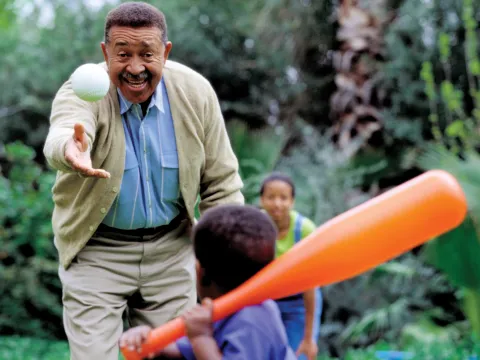- AdventHealth

Whether you’re a pro athlete, weekend player or high school all-star, injuries can be a major setback to your whole health. Knowing the difference between acute and chronic injuries can help you learn to avoid them and keep you strong.
Acute Sports Injuries
Often, acute injuries result from activities such as changing direction suddenly while running, colliding with another player or falling during play. This type of injury happens quickly and can be severe.
Acute injuries include:
- Broken bones
- Concussion
- Dislocated shoulder
- Fractures
- Knee injuries, such as ACL and meniscus tears
- Muscle sprains and strains
- Rotator cuff tears
You may also be putting yourself at risk for acute sports injury if you’re too out of shape to play, aren’t warming-up properly, haven’t been trained properly or are using improper equipment.
Symptoms of acute injuries include:
- Extreme tenderness on the injured area
- Headache or dizziness, nausea and vomiting (concussion)
- Injured arm or leg won’t support weight
- No range of motion in a joint
- Odd angle in a broken bone
- Sudden severe pain
- Swelling
Chronic Sports Injuries
Chronic injuries develop from long-term repetitive motion in sports like long-distance running, cycling and swimming. Sometimes called overuse injuries, they result from wear and tear over time, and can be made worse through bad technique.
Chronic sports injuries include:
- Achilles tendon injuries (in runners)
- Runner's knee
- Stress fractures
- Tennis elbow
Chronic injuries have symptoms in the affected area such as:
- Dull ache when resting
- Pain during activity
- Swelling or fluid build-up
Treatment for Acute and Chronic Sports Injuries
For relief from an acute or chronic injury, and to reduce swelling, use the RICE method:
- Rest to prevent further injury
- Ice for 10-20 minutes every 3 hours
- Compress the injured area to reduce swelling
- Elevate an injured arm or leg above the heart to reduce swelling
You can also take nonsteroidal anti-inflammatory medications such as aspirin, ibuprofen or naproxen to help with the pain.
Although acute injuries are sudden, they often take weeks to heal and may require physical therapy or surgery to help you get back in shape. If not treated, acute injuries can become chronic conditions. Concussions (especially) require special evaluation by a doctor before you can return to play. Chronic sports injuries develop over time, and it takes more time to manage or heal them. Like acute injuries, you may need physical therapy or even surgery, depending on the injury.
Play Healthy
One of the best ways to avoid acute or chronic injuries is to stay in shape, improve your technique and always warm up properly. It’s also good advice to have a trusted professional ready to help you if you do experience an injury.
If you’re focused on injury prevention, or need help healing a nagging sports injury, turn to our orthopedic experts for help. Find a specialist near you.




